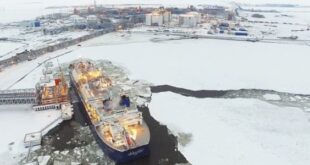The Power of Siberia natural gas pipeline from Russia to China is 75.5 percent complete. Russia’s gas giant Gazprom said on Wednesday. updating the market on the project that is planned to send pipeline gas to the fast-growing Chinese market.
As present. 1.629 kilometers (1.012 miles) of the pipeline are built. or 75.5 percent is complete. Gazprom said. adding that Russia would start supplying China’s CNPC with natural gas as planned. on December 20. 2019.
Gazprom has a 30-year contract with CNPC for the supply of an annual 1.3 trillion cu ft of natural gas via the infrastructure. Its completion is among Gazprom’s top priorities.
Gazprom and CNPC have also discussed another pipeline from Russia to China via the western route—the so-called Power of Siberia 2 pipeline – that would source gas from Western Siberian gas fields. but little progress has been made regarding the specifics of this project.
Gazprom is dominating gas supplies to many European markets while it vies to meet the surging Chinese natural gas demand as the country is in the middle of a massive switch from coal-fired to gas-fired heating in millions of homes.
Natural gas demand in China is growing at a fast rate. and according to a recent report by Eurasia Daily. the Power of Siberia will be essential to solve future gas shortages in the north of the country. This winter. northern China experienced a shortage of gas due to colder than usual weather. and the local authorities have had to enact restrictions on gas consumption.
China expects to raise its own natural gas production to a record-high this year. but this won’t be enough to meet its soaring demand. China’s push to cut pollution and make millions of households switch to natural gas from coal for heating resulted in China becoming the world’s second-largest importer of liquefied natural gas (LNG) in 2017. outpacing South Korea and second only behind Japan. the U.S. EIA said last month. Chinese LNG imports surged 46 percent last year. Despite the fact that China increased its domestic production and pipeline imports last year. natural gas shortages in northern China led to record levels of LNG imports during the winter.
 Iran Energy News Oil, Gas, Petrochemical and Energy Field Specialized Channel
Iran Energy News Oil, Gas, Petrochemical and Energy Field Specialized Channel




